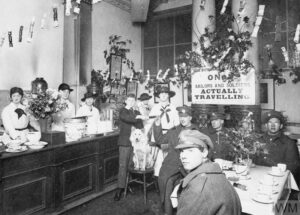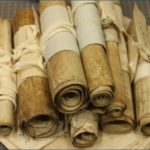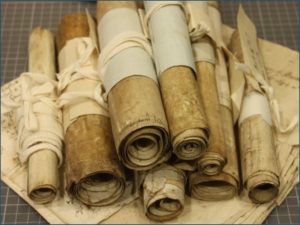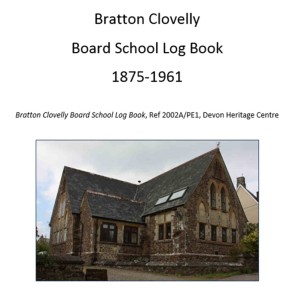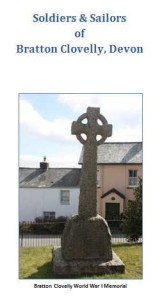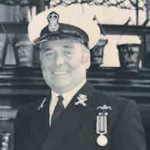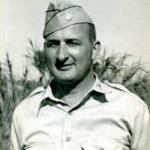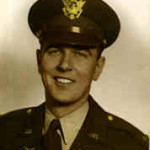We’ll use this part of the site to highlight things we’ve found out about Bratton Clovelly’s past that we hope are of interest to others.
Bratton Clovelly Land Tax Assessments
The Bratton Clovelly Land Tax Assessments have now been extended from 10-year snapshots to annual listings of properties, landowners, tenants and tax assessments for the period 1780 to 1832. These details are the best we have found to date for property information in this timeframe preceding the census years. These tax records do not provide a census of the parish because they only list the heads of household for owners and tenants, however they can be helpful in a variety of ways:
- Building histories of farm and tenement ownership and tenancy over a 52-year period.
- Locating your Bratton Clovelly ancestors in this timeframe.
- In conjunction with parish registers, building a more detailed understanding of who was residing in the parish during these years.
- Better understanding patterns of land ownership.
Another key use is in the assessment values. These values were set in 1692 and do not vary from year to year, totalling £137 pounds 12 shillings every year, and are unlikely to reflect the actual rents that people were paying from 1780-1832. However they can be used for relative comparisons of property values. Unsurprisingly, the glebe lands of the church incumbent attracted the highest value at £10 with Ellacott and Eastlake Farms next topping the list.
These listings were stored with the Devon Quarters Session records and used to determine people’s voting eligibility prior to the establishment of electoral lists. See what you can discover about the people of interest to you by looking under Taxes & Tithes on the Records page.
The 1939 Register has arrived
The 1939 Register is now available on the website. As described by The National Archives research guide for this Register:
The 1939 Register provides a snapshot of the civilian population of England and Wales just after the outbreak of the Second World War. As the 1931 census for England and Wales was destroyed by fire during the Second World War and no census was taken in 1941, the Register provides the most complete survey of the population of England and Wales between 1921 and 1951, making it an invaluable resource for family, social and local historians.
Between the previous 1921 Census shortly after World War I and the 1939 Register just before World War II, Bratton Clovelly experienced a great deal of movement into and out of the parish. The population dropped from 453 to 377 residents in Bratton Clovelly but the population in the detached western area that had become part of Broadwoodwidger in 1885 remained steady at 57 residents. In Bratton Clovelly, only one-third of the residents of the parish in 1921 were still there in 1939 and, in the western part, only 7 of the 57 residents in 1921 were still there in 1939. Some male residents were already beginning to leave for military duty, a number that would grow rapidly as the War spread.
When you look at the 1939 Register, you will notice some records marked as ‘Redacted’. Although FindMyPast released the 1939 Register online some years back, there are still records withheld due to the 100-year privacy rule. Some of these people can be determined by their Civil Birth Registrations but we will have to await the release of further records by FindMyPast to discover who the remaining residents were, slightly less than 10% of the population. We hope you find your ancestors!
Rise of the Bible Christian Methodists
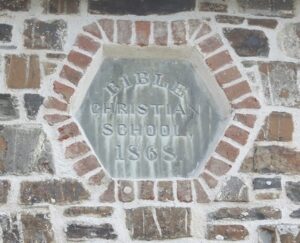
Before the 19th century, the Church of England (Anglicanism) was the only religion practiced in the parish. However, change was rapid in the 19th century with the Bible Christian Methodists forming a Society in Bratton Clovelly in 1818. This denomination would grow throughout the 19th century and by 1860 there were three Bible Christian chapels in the parish. In 1906, the Bible Christians merged with the United Methodist Church and the chapel at Boasley remains open for worship today.
See our Places of Worship theme for more information on the built heritage of religion in Bratton Clovelly. In recent years, many more nonconformist records have become available online and we conducted a study where we tried to distinguish Church of England adherents and Methodist adherents in the parish during the census years of 1841 to 1911. Then we compared the two groups to see how they differed. You can read about the Rise of the Methodists in our Nonconformity study where you may find some surprising results.
England & Wales 1921 Census
Take a look at the England & Wales 1921 Census records, where you’ll find 300 new faces in the parish. The War years were a busy time for movement, with only about 250 people in the parish in 1921 who had been living there just 10 years before. Families welcomed their husbands and sons home from the War but with special remembrance to those who did not return including Nicholas Palmer, Alfred Hutcheson, Cecil Pike and Lawrence Geake. Also in memory of young John Hall Lovell who chose to emigrate to Canada aboard RMS Titanic in 1912. John’s emigration story can be found at FindAGrave memorial 14162622.
The Bratton Clovelly Manor Rolls are here
We are delighted to share translations of the Bratton Clovelly Manor Rolls, comprised of ten rolls covering over 60 court sessions between 1377 and 1684. This was the biggest project we have undertaken in this one-place study and our sincerest thanks to Brooke Westcott for his fine translations of the rolls done over a period of several years. In the introduction to the rolls, you will find overviews and other articles to help you to understand what you might find in the rolls. They are full of names, places and events that help to bring alive the medieval period in this parish. We hope you enjoy them and we’ll continue work on analysing them in the coming years.
Bratton Clovelly Gravestones
We took a few detours in life from the time we set our goals for 2018 to now but we’re back with lots of renewed energy. We hope you find something of interest in the cemetery information we have just added to the site. There are over 500 burials from the St Mary’s and Boasley cemeteries, with gravestone photos and inscriptions.
Goals for 2018
Happy New Year to all! After two years of major focus on my volunteer work for the Guild of One-Name Studies, we start this year with a renewed sense of the importance of getting the Bratton Clovelly OPS website up-to-date. Actually, Mark and I have continued to progress the study behind the scenes but the website hasn’t kept pace. Here’s our starter goals for this year:
- Ensure that we’ve responded to everyone who’s been in contact. Due to a technical issue, we missed being notified of a number of contacts in the past two years. We’ll go back now and make sure that we haven’t missed any. Apologies if you’re still waiting for our response!
- We’ve now got photos of all gravestones in the St Mary’s cemetery as well as the Boasley Methodist Church cemetery. We’ve also got notes on everything we could make out of what’s inscribed on the gravestones. We’ll get all this onto the site and also add the photos to the brilliant work done by Ross Morton on FindAGrave to list all St Mary burials back to the beginning of the registers in the mid-1500s. Not surprisingly though, basically all of the still existing gravestones are from the 19th and 20th centuries.
- We spent the past three years engaging a highly experienced translator, Brooke Westcott, to translate the 10 surviving Bratton Manor Rolls dated 1377-1683 and these translations are now complete. We’ll get them on the website along with a video presentation I made to the Guild Manorial Records seminar that introduces the rolls. We’ll also make sure that The National Archives and Devon Heritage Centre get copies of the full transcripts and translations so that they will be preserved for the future. They provide a fascinating view of life in medieval Bratton Clovelly.
- We’ve recently transcribed the baptism registers for the Northlew Bible Christian Circuit, as part of a nonconformity project that I’m working on with the Family and Community Historical Research Society. About a quarter of Bratton Clovelly parishioners who attended a religious service at the time of the 1851 Religious Census were Bible Christian and the baptism registers have unearthed a substantial number of ‘missing’ baptism records for parish residents who attended the Boasley and Bratton Village chapels. Launceston Circuit baptism registers covering the Rexon Cross chapel are already available under non-conformist baptisms on the Cornwall Online Parish Clerk database at http://cornwall-opc-database.org/ but we’ve also transcribed the baptisms in these registers for those resident in Devon and will add them to our site. We’ve recently photographed the Holsworthy Circuit registers which we hope will unearth even more baptisms for Bratton Clovelly residents and we plan to transcribe these in future.
- Our good friend Celia Eastlake has kindly sent us a copy of an important new publication called Devon Parish Taxpayers 1500-1650, Volume Two containing Bratton Clovelly. As we had suspected from the Bratton Manor Roll translations, the 1601 Church Rate roll confirms that essentially all but the smallest farms in Bratton Clovelly today were already in existence before the start of the Early Modern period. This parish does have remarkable staying power.
- Our biggest Bratton Clovelly effort this year will be to complete the nonconformity project called ‘Communities of Dissent’ with the Family and Community Historical Research Society. Of course, our interest is in Bible Christianity in Bratton Clovelly and our goal is to try to identify and characterise the nonconformists of the parish between 1841 and 1911. We hope to learn a great deal more about the Methodist history of the parish by the end of 2018 and will share our findings.
- As we say at the start of each New Year, we’re going to try to do better with adding blogs to the website on a routine basis to keep everyone aware of any progress. Now our goal is one per quarter.
So that’s our key aims for this year and we sincerely hope that you will get in touch and share your memories and knowledge of the parish so that the study can capture some of the ‘people aspects’ of the parish history. It’s a wonderful place and, although we can’t visit often now that we live in Malta, it will continue to capture our attention in the years to come. The best wishes to you and your family for a wonderful year!
School Days
No, we haven’t forgotten Bratton Clovelly. It’s just been another very busy year. So to make up for lost time, here is a transcript of the Bratton Clovelly Board School Log Book. It’s not the kind of historical record that lists the name of everyone in the school, although it does have many references to staff, church and parish officials, those who gained entry to secondary schools, those who became ill and the like. But what the Log Book is best at capturing is the rhythm of daily life in the parish, things like the harvests, holidays and celebrations, weather, disease, examinations and the comings and goings of children to and from the school.
The Log Book also captures a lot of change, such as changing attitudes toward schooling, the rise of health care, the expansion of central government, the impact of war as the London evacuees arrived and, of course, the shrinking school population and its eventual closure in 1961. We hope you’ll find something of interest! If you have memories of the school, please feel free to share them by leaving a comment below or sending us a note.
Bratton Clovelly’s Soldiers & Sailors
It’s been a very busy winter and I’m sorry to have been neglectful of the blog. But we’ve finally gotten to a point in researching the soldiers and sailors of Bratton Clovelly where there’s more to share. Information on all the military members that we’ve found who are related to the parish and served in the 19th and 20th centuries have now been added to the Records section of the website.
We hope that this is just the beginning, though. The historic records can only tell part of the story and undoubtedly there are others who served that we haven’t found yet. So our hope in sharing this information is that those of you who know of these service members or their families will be able to help make the stories more personal and complete. Any information will be of value, like regiments and service numbers, but it’s the family stories, photos and mementos that will help everyone to remember best.
If you would like to take a closer look at this information, we’ve made a pdf booklet that can be printed out. Just click here for this booklet, which contains everything we’ve discovered so far. Please contact us if you recognise anyone!
Bratton Clovelly WWI Roll of Honour
It’s been a while in the making but we’re very pleased to now publish what we’ve learned about the Bratton Clovelly soldiers who gave their lives in World War I. The more we looked at the records, the more we realised just how huge an impact the War had on this parish. Soon we’ll also be publishing a list of all the soldiers and sailors we’ve found who served in the War, including those who thankfully returned. It’s a long list probably accounting for at least half of the men of the parish born between 1880 and 1900. No family seems to have been left untouched.
The information we’ve assembled is from the historic records, sources like the Commonwealth War Graves Commission website, WWI Medal Cards and Voter Lists. One of the most helpful sources has been the local newspapers where you can find mention of people home on leave, those being promoted, soldiers reported missing or injured or prisoners of war and, of course, the notifications of those who had fallen. But the stories could be so much better with family memories and photos that really help to describe all these young people who sacrificed everything. If anyone has information that they are willing to make public, please contact us so that we can share it with others.
The work on the soldiers and sailors of the parish is a labour of love for us, especially as both Mark and I come from military traditions. My grandfather, Colonel Roy F Blackmon (1909-1988), US Army, served in Europe in World War II, the husband of Marion Elizabeth Eastlack (1910-1999) of Bratton Clovelly descent. He left his WWII memoirs which we hope to share in the future. My father, Donald T. Kirwan (1928-1993), was a Company Commander in the US Army Reserves during the Korean conflict. My own career started when my grandfather commissioned me as a Computer Technology Officer in the US Air Force. Mark’s stepdad, Chief Petty Officer Leslie A Smith (1934-2013), MSM, spent 40 years in the Royal Navy, 35 in submarines. We are committed to keeping the memory of those who gave so much.
